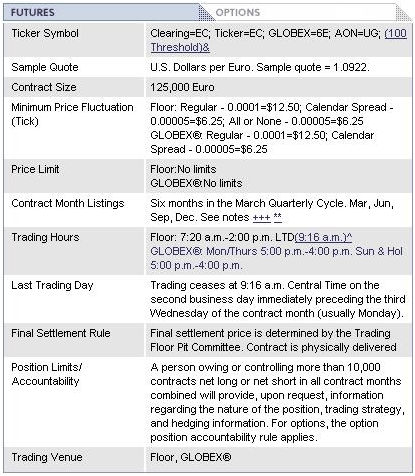Speculating v With Futures Explained
Post on: 21 Май, 2015 No Comment

Futures markets originated as a way for producers to stabilize their income and/or raw material supply amid market fluctuations, but it soon grew into a way for speculators to bet on the direction of a given commodity. These two market forces interact to create the futures markets that we know today and each plays a critical role in the market’s dynamics [for more commodity news and analysis subscribe to our free newsletter ].
The Commodity Futures Trading Commission (CFTC)–-the government body responsible for regulating the futures marketclassifies market participants as “commercial traders” or “non-commercial traders” (otherwise referred to as speculators).
These two parties are defined by the CFTC as follows:
- Commercial traders are those that use futures in a given commodity in order for hedging purposes, as defined in CFTC regulations.
- Non-commercial traders are those that do not own the underlying assets or its financial equivalent and only hold positions in futures contracts.
But, what does this all mean?
Commercial Hedging to Lock in Pricing
Suppose an airline wants to lock in the price it is paying for jet fuel in order to protect itself from a sudden rise in prices due to a war in the Middle East. Or, perhaps a wheat farmer wants to ensure he or she will generate a set amount of revenue for the year to protect themselves from potential market gyrations for future supply and demand [see also How To Lose Money Investing In Commodities ].
These problems can be addressed by using futures as a hedge. The airline can purchase oil futures to offset increasing oil prices, while the farmer can sell wheat futures to lock in his or her crop revenues for the year. Both of these parties are known in the industry as “commercial hedgers,” traders that rely on the market purely to lock in prices and take delivery of the commodity.
Commercial hedging is most popular in agriculture and banking, where long crop cycles and exposure to interest rates and foreign currency volatility are commonly hedged. These traders generally account for between 40% and 60% of the open interest in commodities, according to data from the CFTC, suggesting an overall share of perhaps half of the futures market.
Futures Speculation for Directional Bets
Traders and investors are always looking for new ways to capitalize on the price movements of various assets. For instance, an investor may feel that hard assets like gold offer a better risk to reward profile during an economic downturn. Or, perhaps a trader believes that new ethanol regulations will enhance demand and result in higher corn prices over the coming months.
In these scenarios, traders and investors can use the very same futures to speculate on the price movements of underlying commodities. The investor can purchase gold futures to capitalize on the downturn, while the trader can purchase corn futures to capitalize on the higher pricing. Unlike commercial hedgers, these “speculators” are interested in only the price appreciation and never intend to take delivery of or ever own the underlying commodity [see also The Ten Commandments of Commodity Investing ].
Speculation accounts for a large and growing portion of the futures markets. According to Congressional testimony by a commodities specialist in 2009, the oil futures market routinely trades more than a billion barrels of oil per day, which, given actual production, suggests that some 90% of trading involves speculators exchanging “paper” barrels with each other.
Smaller Hedgers and Speculators
Many traders and investors employ hedging or speculation strategies that fall somewhere below the CFTC’s reporting threshold. For example, suppose that an investor holds a tech-heavy portfolio of equities, but would like to incorporate some hard assets into the portfolio to protect against potential downside risk in the event that the market falls sharply.

In this scenario, the individual investor may want to hedge the equity position with a gold or other hard asset futures contract. The market turning south would result in an increase in the gold futures’ contract value, while a market continuing northward would see a reduction in the contract’s value that may be offset by improvements in the equity portfolio.
Small traders engaged in financial hedging or speculation account for a relatively small portion of the futures market. According to CFTC data, their share of open interest tends to range from 4% to 8% of the futures market, depending on the commodity. Still, this portion of the market can significantly influence commodity prices with a high volume of trades.
A Look at Purpose and Controversy
Commercial hedgers and speculators play very different roles in the futures marketplace, but both are necessary in order to keep things running smoothly. Generally, commercial hedgers have large, long-term needs that are filled by liquidity that’s generated from shorter-term speculators that are more in-tune with future supply and demand conditions.
Despite the apparent benefits, speculators have been the source of much controversy in the futures market. The presence of purely financial speculators that began entering the market en masse in 2003 has led to concern that they are pushing up the price of crude oil as much as 40%, according to testimony from Exxon Mobil’s Rex Tillerson in 2011.
The anecdotal evidence may be high, but there is little statistical evidence backing this assertion, according to several academic papers. For instance, a 2009 Federal Reserve report entitled, “Does Speculation Affect Spot Price Levels?”, found no evidence that speculative activity in the futures markets for industrial metals caused higher spot prices in recent years.
A separate 2012 study, entitled “The Role of Speculation in the Oil Markets: What Have We Learned So Far,” found strong evidence that the co-movement between spot and futures prices reflects common economic fundamentals rather than the financialization of the oil markets – that is, speculators provide liquidity without significantly impacting spot prices.
The Bottom Line
The futures market consists of commercial hedgers, institutional speculators and smaller traders that fall somewhere between the two. All of these parties play an important role in the efficient operation of the futures market, with commercial hedgers requiring large contracts and speculators providing the liquidity to improve price discovery and efficiency. There is some controversy among economists, investors, and the general public regarding the role of speculators in the financial markets, but most statistical evidence points to the fact that they do not significantly impact spot prices.
Don’t forget to subscribe to our free daily commodity investing newsletter and follow us on Twitter @CommodityHQ .
Disclosure: No positions at time of writing.
Commodity HQ is not an investment advisor, and any content published by Commodity HQ does not constitute individual investment advice. The opinions offered herein are not personalized recommendations to buy, sell or hold securities or investment assets. Read the full disclaimer here .














